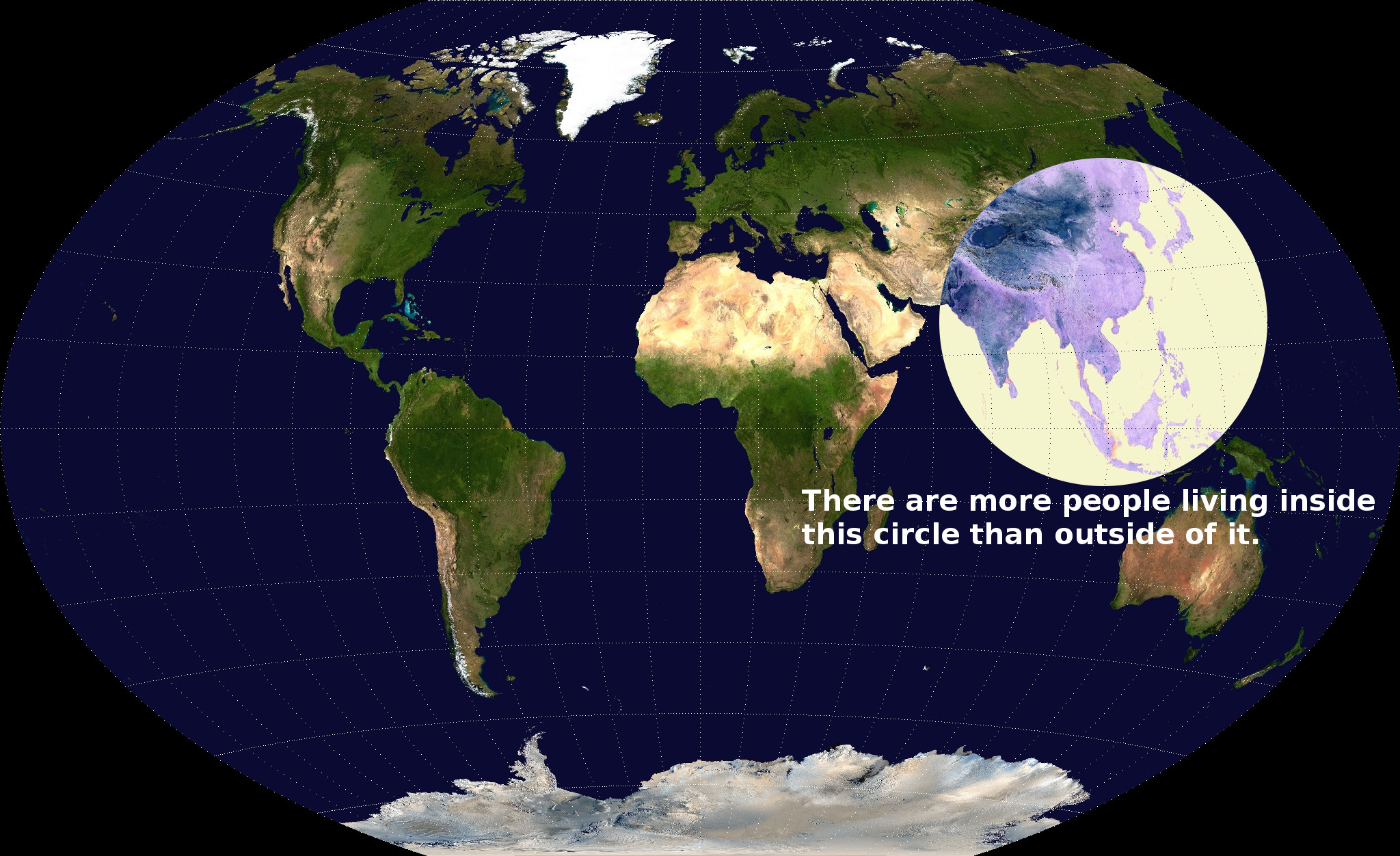HR map of the day - time to widen your circle
The map below, initially posted by Reddit user valeriepieris, made the internet rounds last week, so perhaps you've seen it. Or perhaps not, as we seem often in the HR online space (me included), debating about cultural fit and performance reviews and the difference between SaaS and hosted applications, and other such nonsense, when chances are at least more likely information like in the map below will have a more profound and significant impact on our businesses in the next decade.
So here is the map, and then we can discuss what, if anything this should mean to those of us in the Talent game.
So for the US-based Talent pro, this might be kind of surprising, I know it was surprising to me. We know that the world is supposed to be shrinking, but in a way this map doesn't really bear that out. Rather it shows pretty simply that the center of population is on the other side of the world, and packed into a relatively small area.
So what might this mean, or what might you need to be thinking about with this map in mind?
If you are an older, established company that is having a hard time finding opportunities for growth in your domestic market, then if you are not looking to play inside the circle in some way - then you are effectively cutting out half of the world's population and potential customers.
If you are a newer Talent pro, then chances are sometime in your career you will either need to understand the talent pools inside the circle, or perhaps even have to spend some time working inside the circle yourself. Maybe not today or tomorrow, especially if your shop is in some kind of truly local business. But do you really think you will be working there forever? No time like the present to start preparing for both of those possibilities.
Last, if you are a parent, or perhaps plan to be a parent one day, this map is just another representation of the fact that the world our children will inherit and have to make their way in will be substantially different than it was even one generation ago. That has probably been true of all generations, but that doesn't give you a pass to ignore what is happening in the world today and to think about how best all of us should be preparing those rock and roll loving young whippersnappers.
So take a look at the map, think about (at least for a few minutes), what it might mean for you. Then, if you must, resume tweeting about how companies need to be more social and how employee engagement is good.
Somehow, I think all that stuff will mean very little when compared to some of the really big changes happening in the world.
Note: If you need or care about the rough population estimates that back up this conclusion here they are:
World pop: 7+B, so the circle must have more than 3.5B people in.

 Steve
Steve

